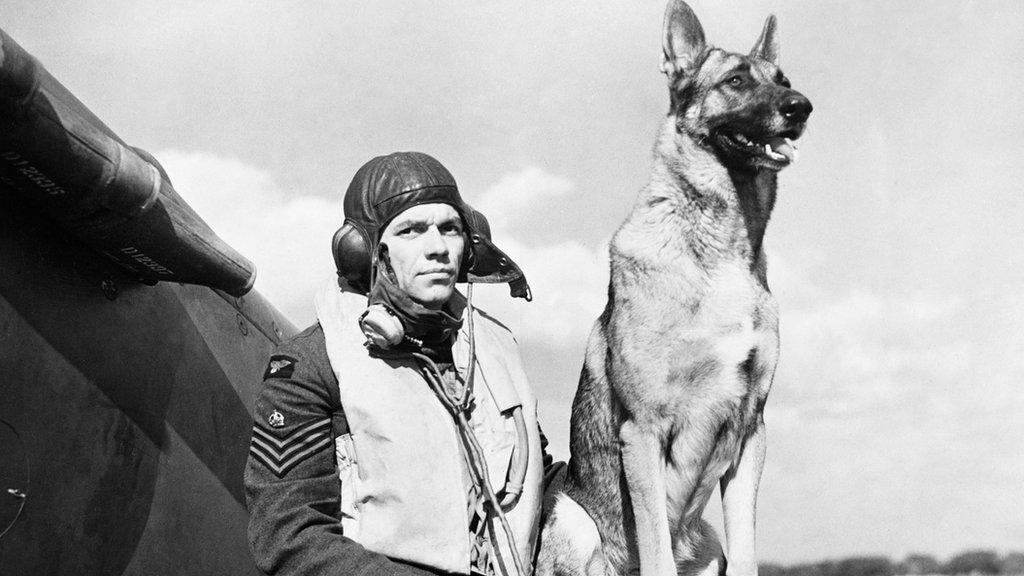Duxford: From daring dogfights to acrobatic airshows
- Published
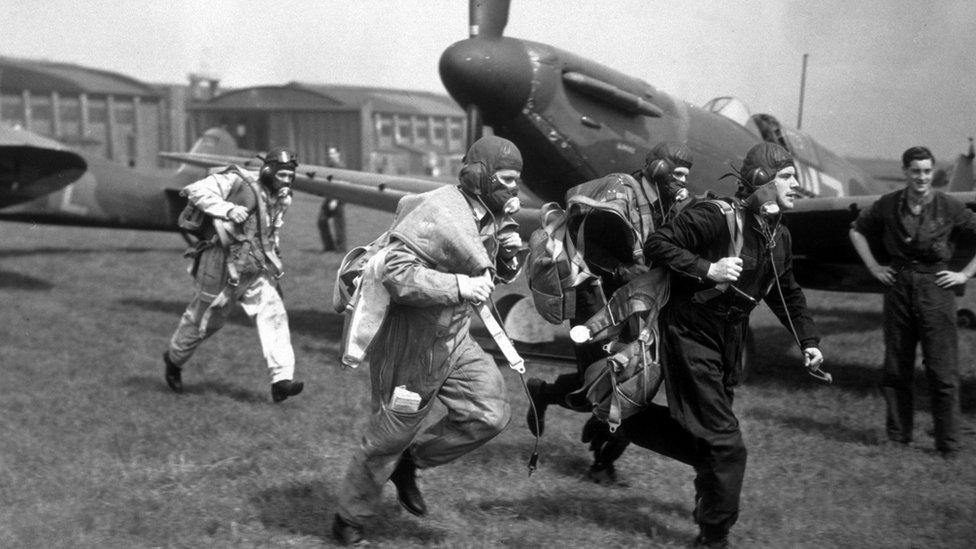
The moment a World War Two dogfight turned fatal is one of 100 stories being shared to mark the centenary of an RAF station.
Work began on Duxford aerodrome in 1917 during World War One, and in World War Two it became famous for its Battle of Britain and USAF connections.
It became derelict after the RAF closed it in 1961, before it reopened as a branch of the Imperial War Museum in 1976.
The Royal Flying Corps - renamed the Royal Air Force in 1918 - began work on Duxford in 1917.
The RAF was joined by the Women's Royal Air Force in 1918.

Artist Nick Ryan has now created DX17, the Cambridgeshire museum's first art installation, to tell the airfield's story.
Imperial War Museums' director-general Diane Lees said the "futuristic sound sculpture" tells the "personal stories of Duxford's past and present".

It includes a World War Two dogfight which was witnessed by WAAF Jean Mills, who watched as a plane crashed on her first day at RAF Duxford in 1941.
She was an aircraft spotter who later said the dogfight was the moment she realised her job "wasn't a great lark, it was quite a serious business".
Before then Duxford was one of the RAF's first operational fighter stations in the 1920s.
Thousands of spectators attended the 1937 Empire Air Day
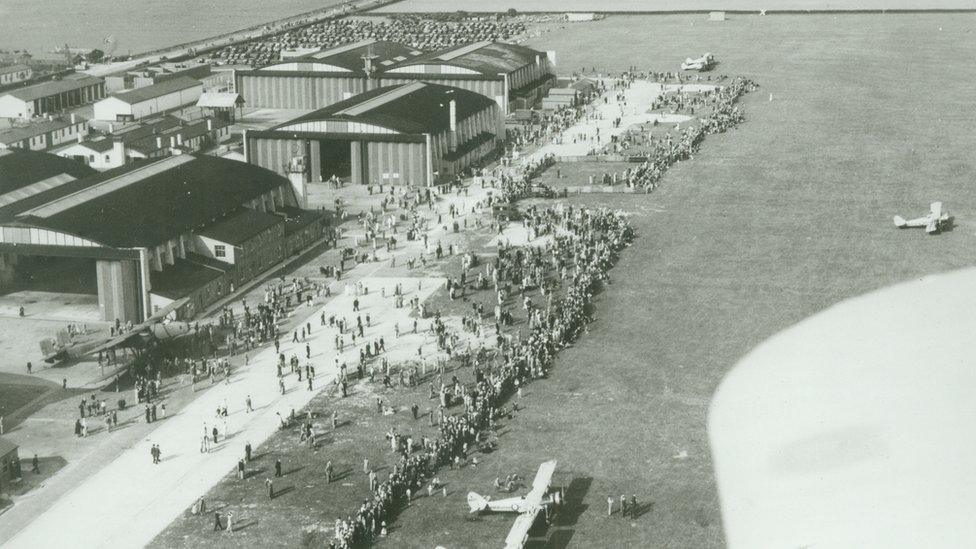
In April 1943, the 78th Fighter Group of the United States Army Air Forces arrived - this aircraft was flown by the 78th's commanding officer Col John D Landers in 1945.
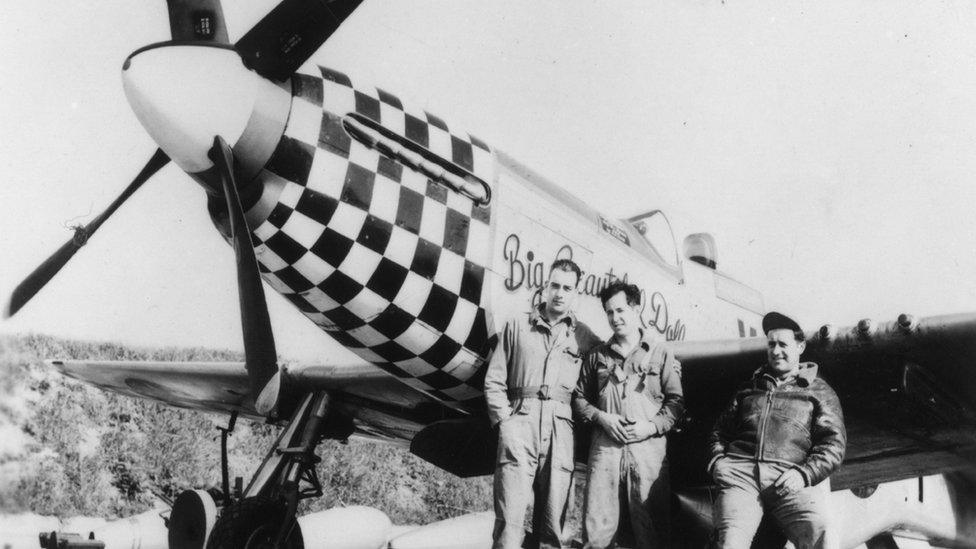
George "Grumpy" Unwin and his Alsatian Flash was a Duxford-based Battle of Britain pilot.
The miner's son was decorated for gallantry three times, retired as a Wing Commander and died in 2006 aged 93.

Duxford was later considered unsuitable for the next generation of Cold War supersonic jet fighters, and a decade after it was abandoned in 1961, the site was derelict.

But the base still had uses. The movie Battle of Britain was filmed there.
Actors Robert Shaw (second left) and Christopher Plummer (second right) took time out from shooting to talk to pilots Group Captain Sir Douglas Bader (left) and Group Captain Peter Townsend (right) in May 1968.
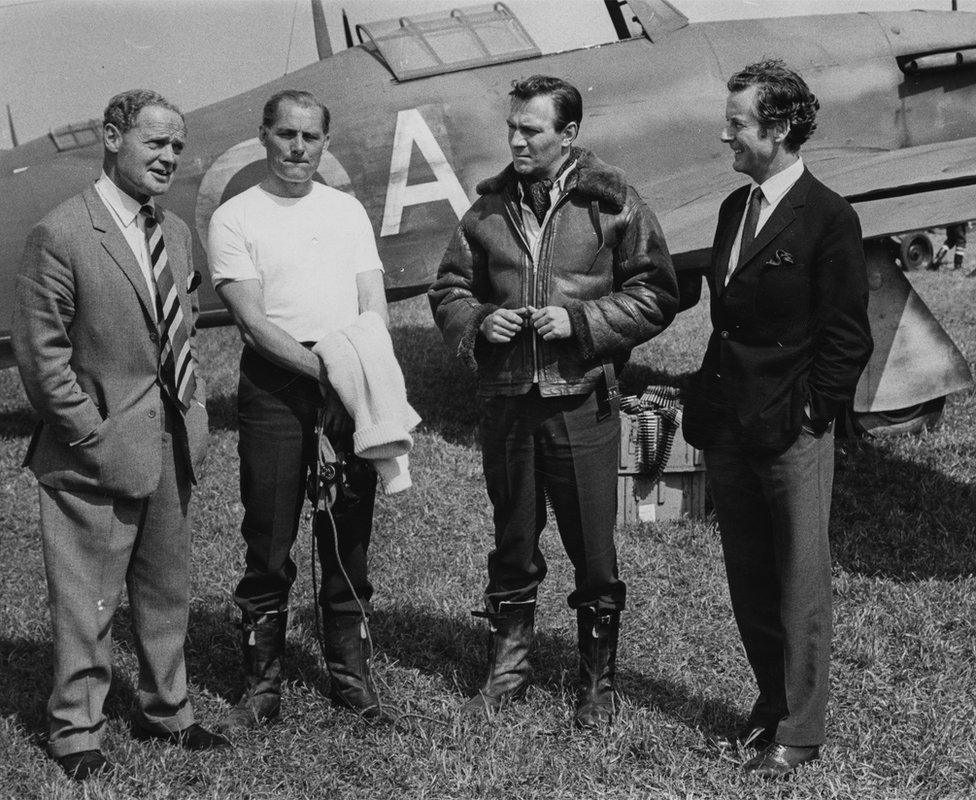
In 1977, a year after the Imperial War Museum opened at Duxford, an airshow was held.
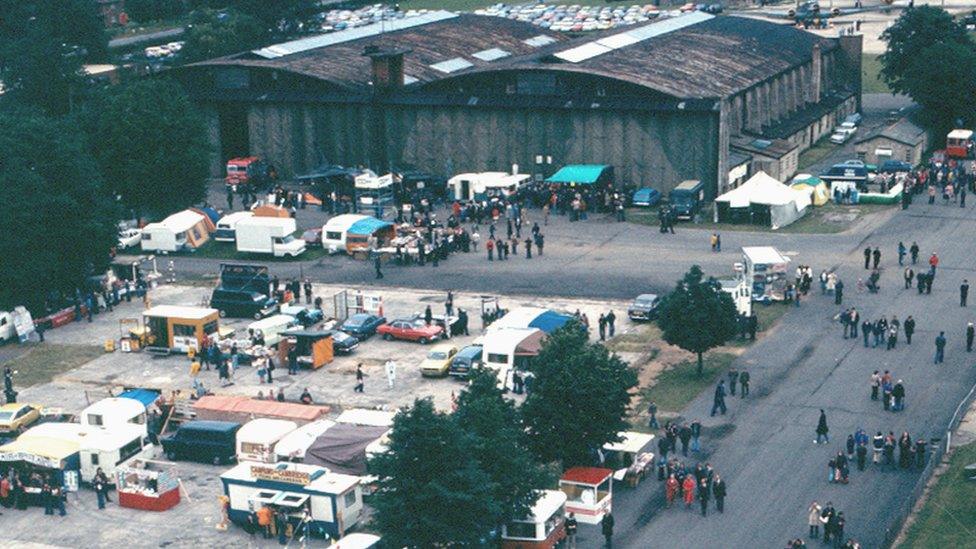
And since then a number of notable people have visited. The Duke of Cambridge came in 2015 to see a newly restored Supermarine Spitfire Mark I N3200.
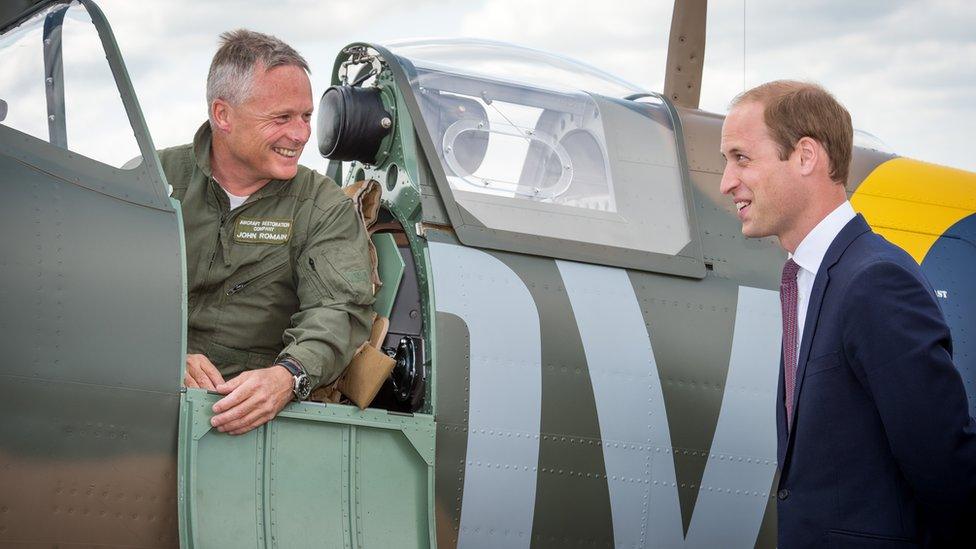
Today the summer airshows attract thousands of visitors.
The contemporary art installation marking the aerodrome's 100th birthday is called DX17, named after the station's World War Two airfield identification code.
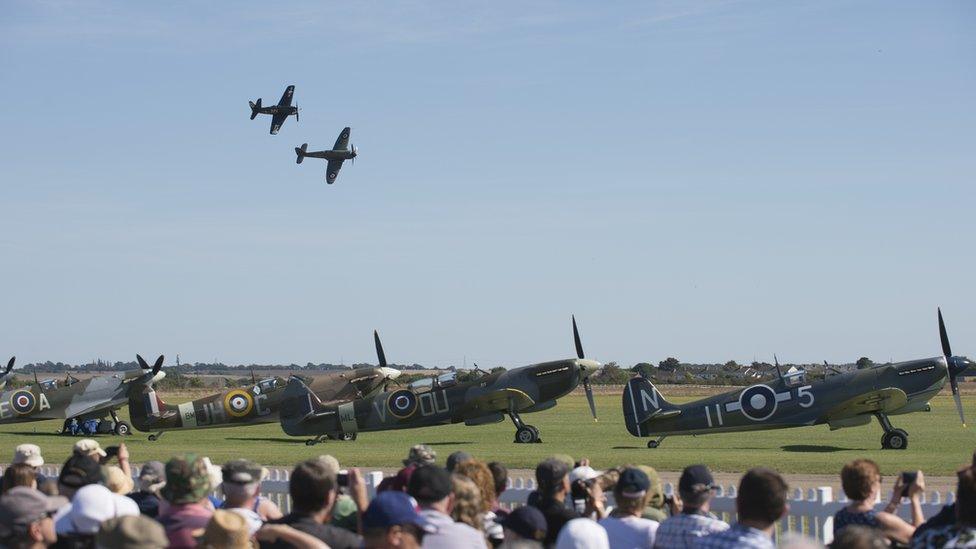
Pictures from the Imperial War Museum (IWM) and Getty Images.
- Published19 June 2016
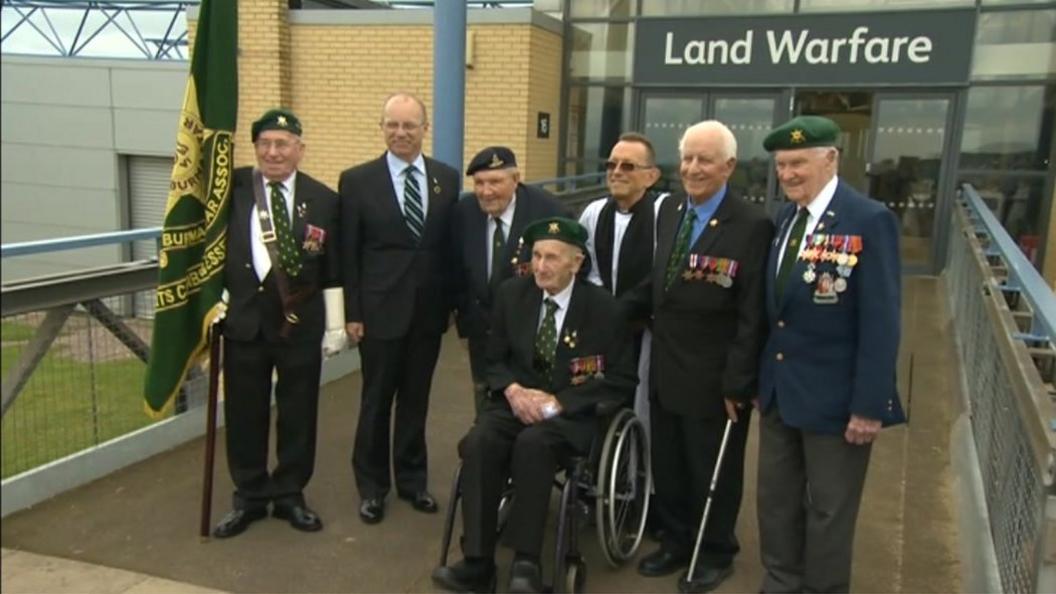
- Published16 March 2016
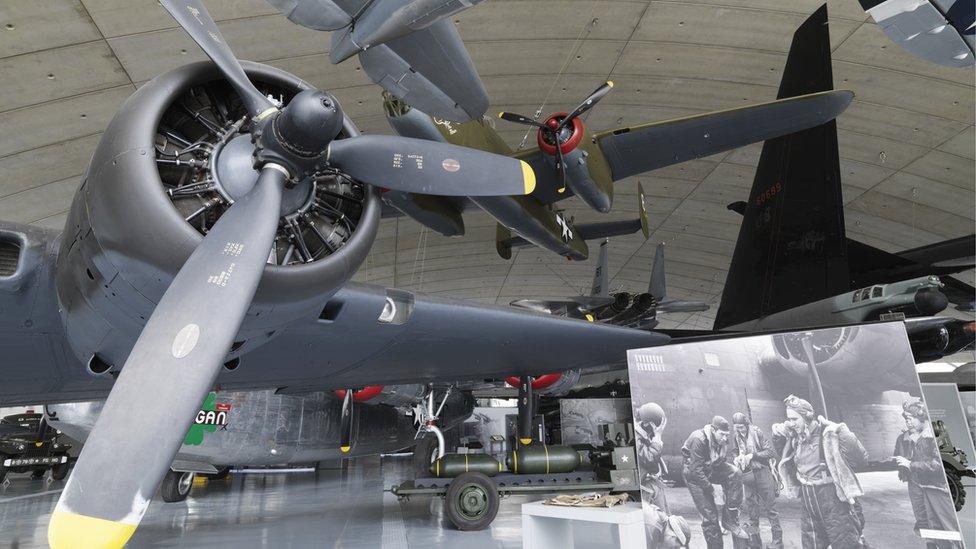
- Published24 May 2015
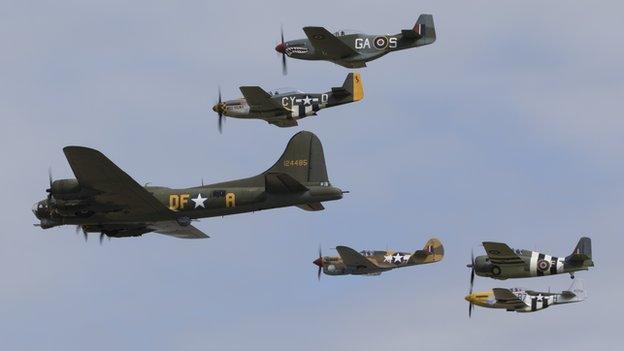
- Published16 January 2014
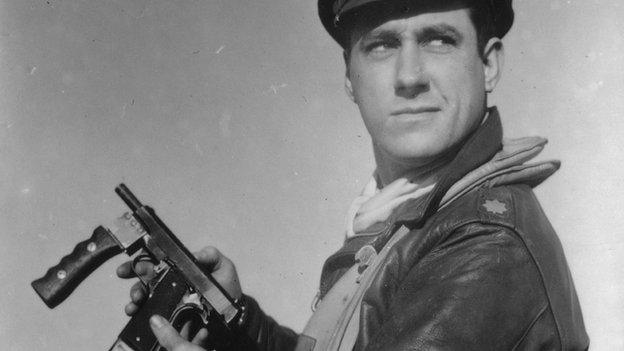
- Published31 March 2013
